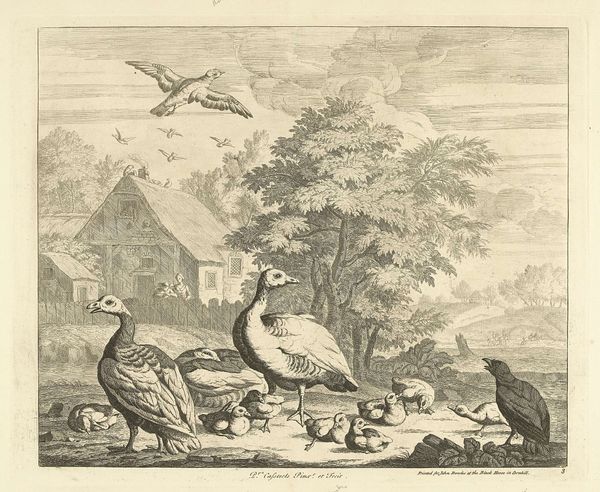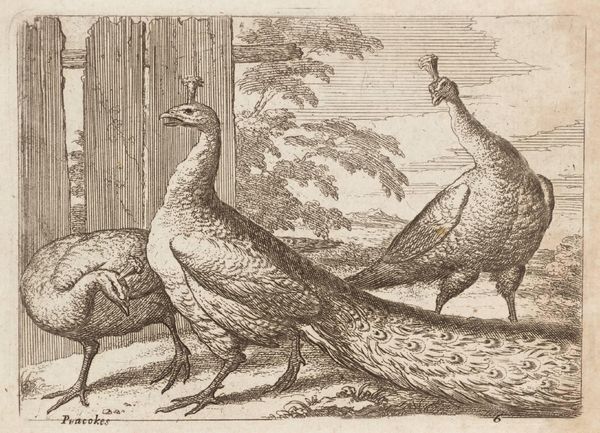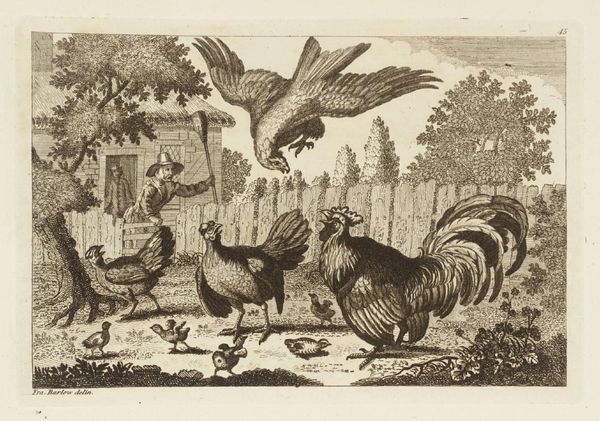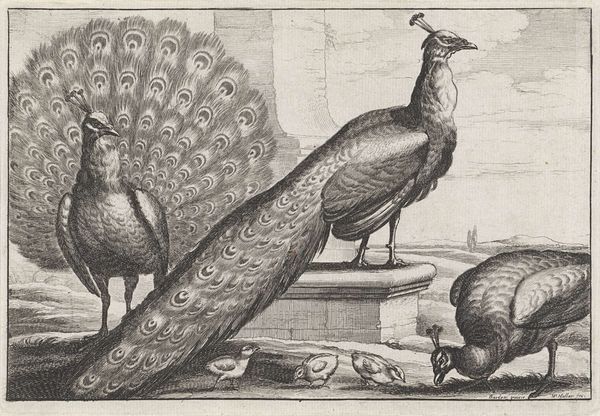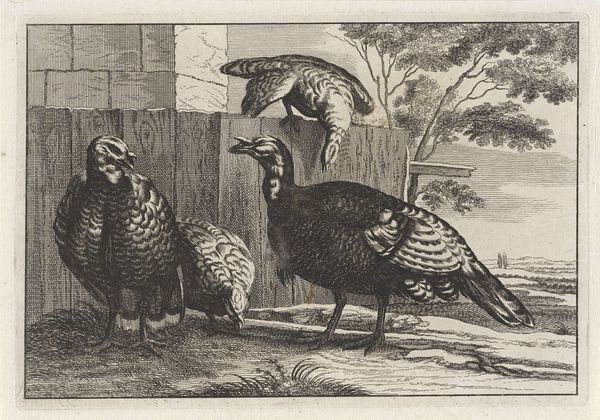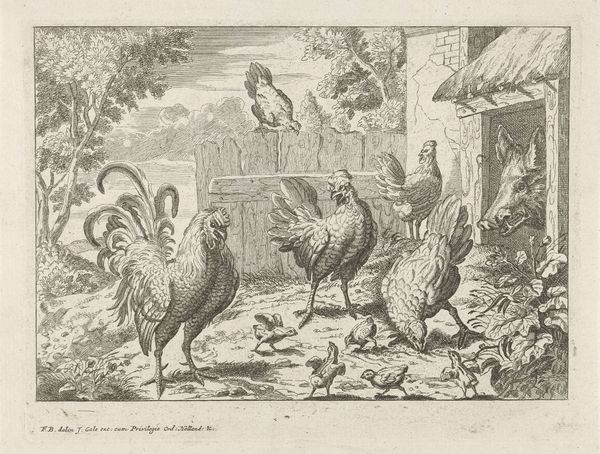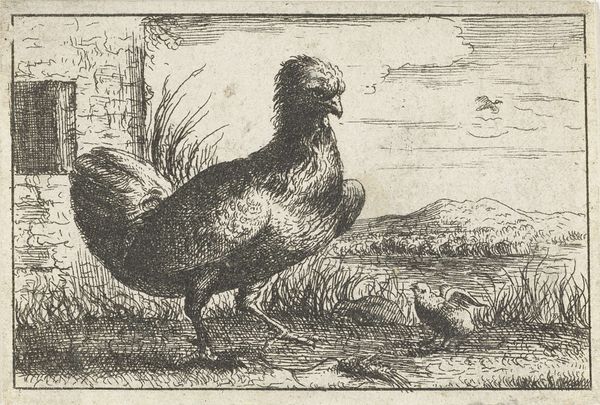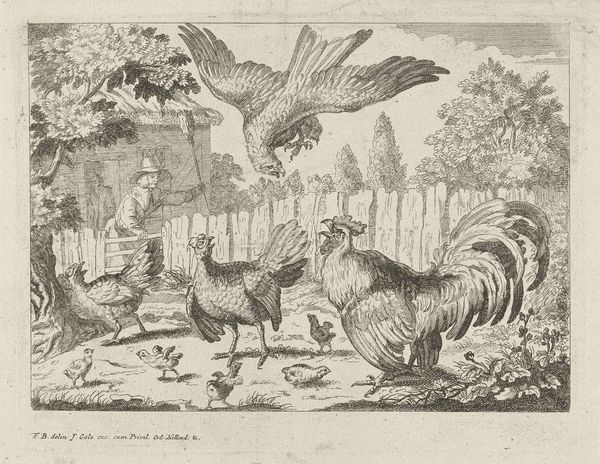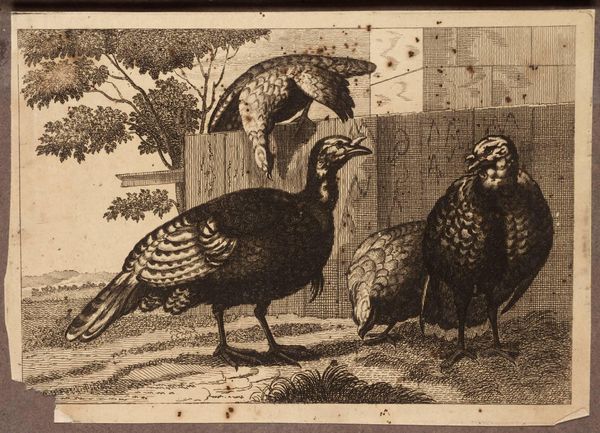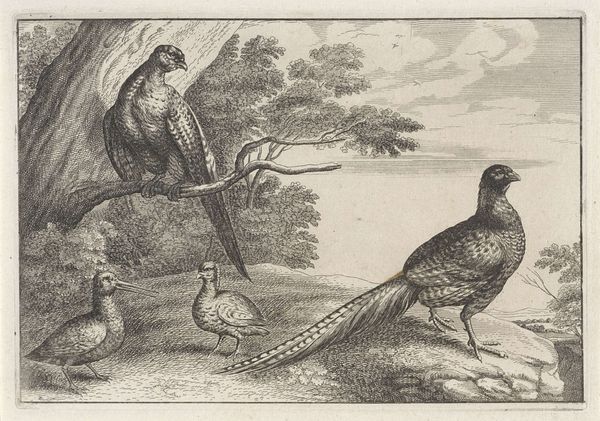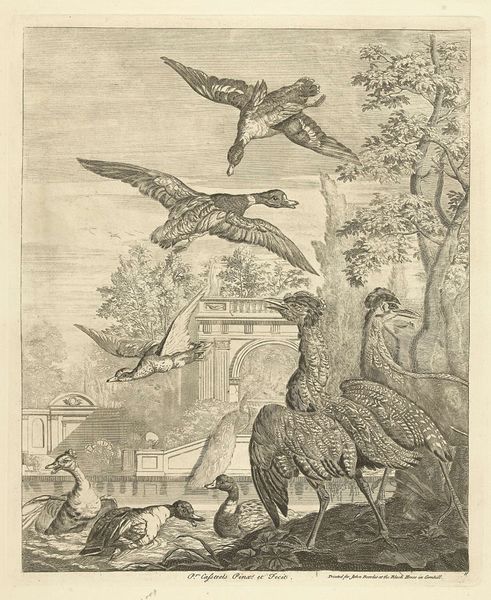
print, etching, engraving
#
baroque
# print
#
etching
#
old engraving style
#
landscape
#
figuration
#
engraving
Dimensions: height 300 mm, width 360 mm
Copyright: Rijks Museum: Open Domain
Curator: This etching, created by Peter Casteels III between 1708 and 1749, is titled "Peacock and Turkey by a Garden Colonnade." The old engraving style suggests a world brimming with life. What strikes you first? Editor: The stark contrasts created by the etching—it's an interplay of light and shadow. The garden colonnade gives the image a certain symmetry. There's a lot of activity but I think this composition ultimately is speaking of power and privilege in this period, perhaps not unlike other similar gardens. Curator: Exactly, consider that through a contemporary lens. It showcases a highly curated vision of nature, designed for pleasure, wealth and social position—a garden is more than a place for plants. How does Casteels position this image to convey ideas of dominion and control, not only of animals but by the land-owning class? Editor: Well, note the animals that are depicted, even those brought from faraway continents—turkeys are an import! And then juxtapose that domestication with the soaring hawk, in a free yet predatory flight with other fowl, as if freedom can exist only as violent exploitation. There's an imperial power dynamic visualized, for sure. What can you tell me about the symbolism used in this etching? Curator: Casteels certainly uses well-known symbolism here. For example, the peacock has historically signified pride, vanity, and sometimes immortality. Consider the role of the peacock specifically during the Enlightenment and its proliferation throughout aristocratic country houses across Europe, symbolizing status and sophistication. It's placement in relation to the more humble chickens and turkeys can be read in a socio-economic context as the time's emerging ideas about animal and human hierarchy. Editor: It’s all so intertwined, the natural world serving to bolster social hierarchies, and I wonder, given that Casteels also made his living as a tapestry and textile designer for the wealthy— how much he consciously was constructing such statements versus perpetuating visual cultural norms. Curator: Good point! Regardless of intention, this image provides a window into how perceptions of nature and society were intertwined. Editor: Yes. I see that tension so clearly now—a controlled environment reflecting broader social structures of domination—quite literally an “eagle eats fowl” microcosm of 18th-century power relations.
Comments
No comments
Be the first to comment and join the conversation on the ultimate creative platform.
